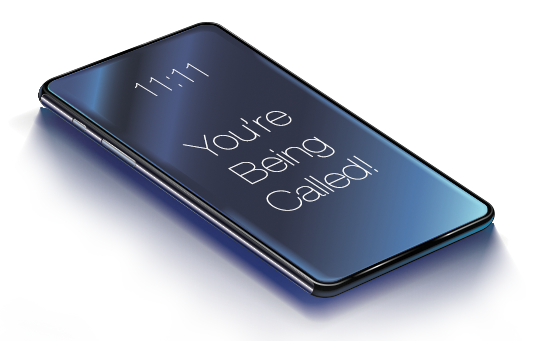Inner change creates outer change.
My Storytelling Roots
Many years ago, because I was naturally quiet, I wanted to prove that I could speak publicly. So I would study great speakers for hours like Kennedy and Martin Luther King. I studied effective speakers’ body language too, not just their words.
I got good and won several storytelling and speaking competitions. A lot of people thought I was an actor when I told stories. I told a story with all my heart and soul, which is different from just mouthing the words.
Another Kind of Story:
The Story You’re Telling Yourself
There’s also another kind of storytelling, which is the story or stories you tell yourself. This is also where my inside coaching skills come in. What’s the story you’re telling yourself that’s holding you back?
You may need to understand the stories in your own head. We often tell ourselves we can’t do something because of where we come from, because we’re too young or too old or not enough or too much or whatever. Those stories don’t serve you and we need to uproot them.
I use some of the same strategies from the stage to understand you also. I’ll keep digging and might ask you 15 times why is that important? What’s the best way for you to deliver that?
The Bottom Line
A good story that you’ve experienced, told and delivered in a compelling way, will drive business and results.
So what’s your story? I want to hear it.

Storytelling
There’s an art and science to storytelling.
Since people began, storytelling has been one of the most powerful means of communication. People will listen if you share your information through a story.
How do you tell a story effectively? Entrepreneurs need to be able to tell a compelling story, whether on a virtual or physical stage or in their website, emailings and other communications they bring to their audience.
Your story has to be told in a captivating and engaging way. You have to figure out how it relates to your audience and not make it only about you.
The Outside Part
Over the years, I’ve been mentored by world class speakers. I’m certified as a World-Class Speaking Coach and have studied with many Toastmasters World Champions. I’ve studied the Dale Carnegie method and personally with John Maxwell and Jack Canfield, among others.
There are many techniques and structures I can show you about storytelling, however, you need to learn when and where to use each tool and if you just read your story and don’t actually step into it, you won’t come across as passionate and you won’t reach your audience.
As a technique example, you can tell a story in the past tense, narrating it. Or you can step into it and tell it in the present tense. Generally speaking, the combination works best but it depends on a lot of factors I can help you determine for your case. Your story also has to fit into your overall content and be fine-tuned for your audience(s). A lot depends on the audience you’re addressing.
If you’ve got 10 minutes to tell your story, that’s going to be structured differently than delivering an hour-long keynote, in which case your key story could be used throughout your talk. You can refer back to it (a “callback”). It can be used as a running thread throughout your talk that keeps people engaged.
The Inside Part
The inside part of telling a story well includes learning how to control your emotions, when and when not to be vulnerable.
How do you get yourself emotionally ready?
That’s different from structuring your script. I spend a lot of time getting to know what will work for YOU because the inside part matters as much as your outside technique. I use a lot of my other skills to get you internally prepared to deliver a story effectively.
I get to understand you well and ask powerful questions so we can finally get to the real reason why you have to tell the story you’ve got, whether it’s about the business you’ve created or something else you’ve experienced or are passionate about.
I customize the structure of our work because it’s not cookie cutter. If you’re an introvert and have never been on a stage before, my advice to you will be different than it will be for an extrovert.
I use NLP, hypnosis and energy work to help with your inner preparation as well as coaching you on how to structure your outer story in a logical and powerful way.

Storytelling
There’s an art and science to storytelling.
Since people began, storytelling has been one of the most powerful means of communication. People will listen if you share your information through a story.
How do you tell a story effectively? Entrepreneurs need to be able to tell a compelling story, whether on a virtual or physical stage or in their website, emailings and other communications they bring to their audience..
Your story has to be told in a captivating and engaging way. You have to figure out how it relates to your audience and not make it only about you.
The Outside Part
Over the years, I’ve been mentored by world class speakers. I’m certified as a World-Class Speaking Coach and have studied with many Toastmasters World Champions. I’ve studied the Dale Carnegie method and personally with John Maxwell and Jack Canfield, among others.
There are many techniques and structures I can show you about storytelling, however, you need to learn when and where to use each tool and if you just read your story and don’t actually step into it, you won’t come across as passionate and you won’t reach your audience.
As a technique example, you can tell a story in the past tense, narrating it. Or you can step into it and tell it in the present tense. Generally speaking, the combination works best but it depends on a lot of factors I can help you determine for your case. Your story also has to fit into your overall content and be fine-tuned for your audience(s). A lot depends on the audience you’re addressing.
If you’ve got 10 minutes to tell your story, that’s going to be structured differently than delivering an hour-long keynote, in which case your key story could be used throughout your talk. You can refer back to it (a “callback”). It can be used as a running thread throughout your talk that keeps people engaged.
The Inside Part
The inside part of telling a story well includes learning how to control your emotions, when and when not to be vulnerable.
How do you get yourself emotionally ready?
That’s different from structuring your script. I spend a lot of time getting to know what will work for YOU because the inside part matters as much as your outside technique. I use a lot of my other skills to get you internally prepared to deliver a story effectively.
I get to understand you well and ask powerful questions so we can finally get to the real reason why you have to tell the story you’ve got, whether it’s about the business you’ve created or something else you’ve experienced or are passionate about.
I customize the structure of our work because it’s not cookie cutter. If you’re an introvert and have never been on a stage before, my advice to you will be different than it will be for an extrovert.
I use NLP, hypnosis and energy work to help with your inner preparation as well as coaching you on how to structure your outer story in a logical and powerful way.
My Storytelling Roots
Many years ago, because I was naturally quiet, I wanted to prove that I could speak publicly. So I would study great speakers for hours like Kennedy and Martin Luther King. I studied effective speakers’ body language too, not just their words.
I got good and won several storytelling and speaking competitions. A lot of people thought I was an actor when I told stories. I told a story with all my heart and soul, which is different from just mouthing the words.
Another Kind of Story: The Story You’re Telling Yourself
There’s also another kind of storytelling, which is the story or stories you tell yourself. This is also where my inside coaching skills come in. What’s the story you’re telling yourself that’s holding you back?
You may need to understand the stories in your own head. We often tell ourselves we can’t do something because of where we come from, because we’re too young or too old or not enough or too much or whatever. Those stories don’t serve you and we need to uproot them.
I use some of the same strategies from the stage to understand you also. I’ll keep digging and might ask you 15 times why is that important? What’s the best way for you to deliver that?
The Bottom Line
A good story that you’ve experienced, told and delivered in a compelling way, will drive business and results.
So what’s your story? I want to hear it.

